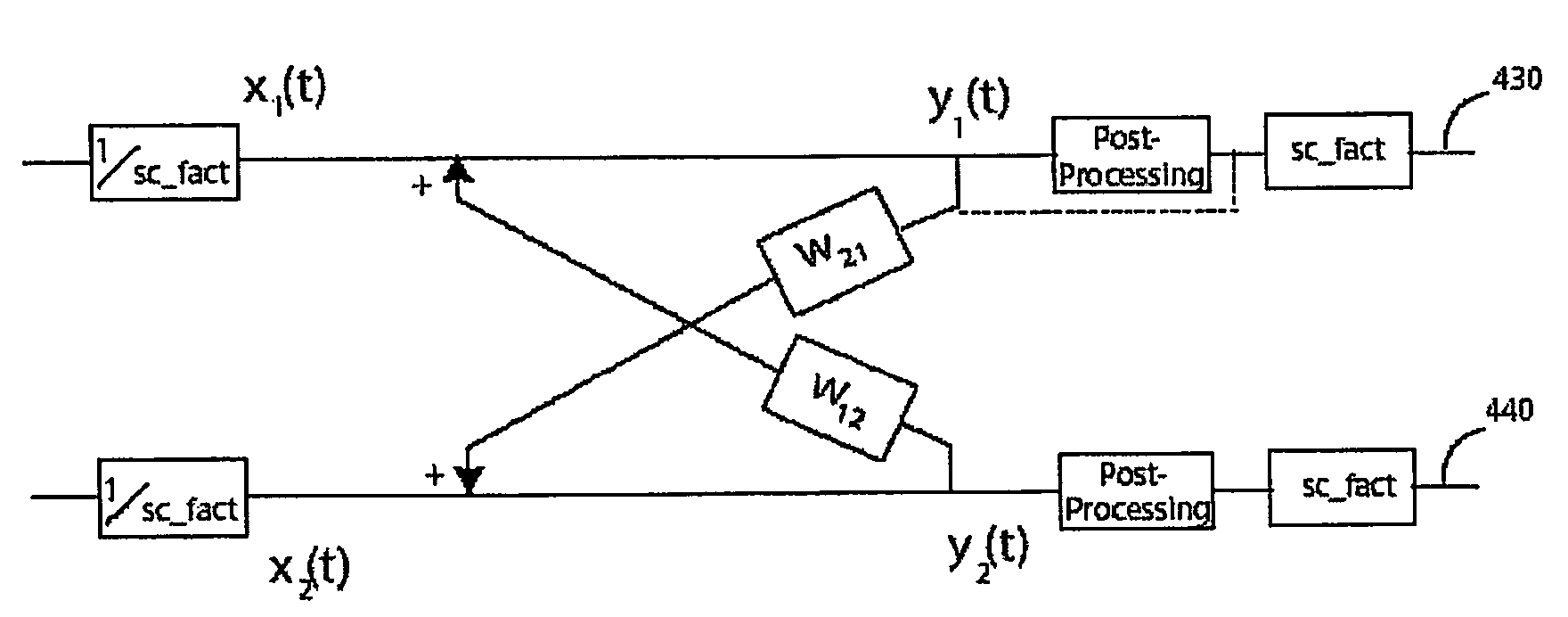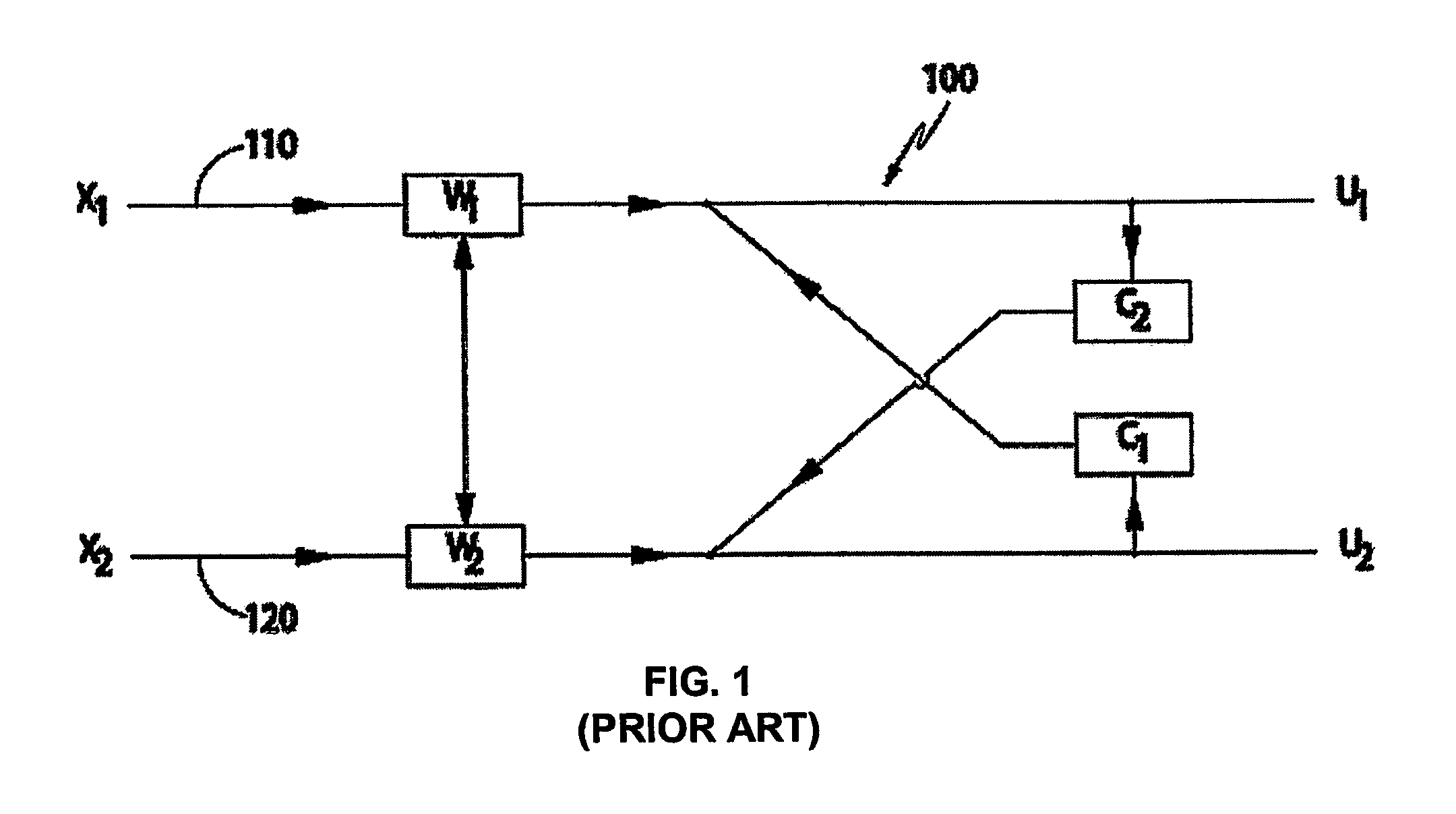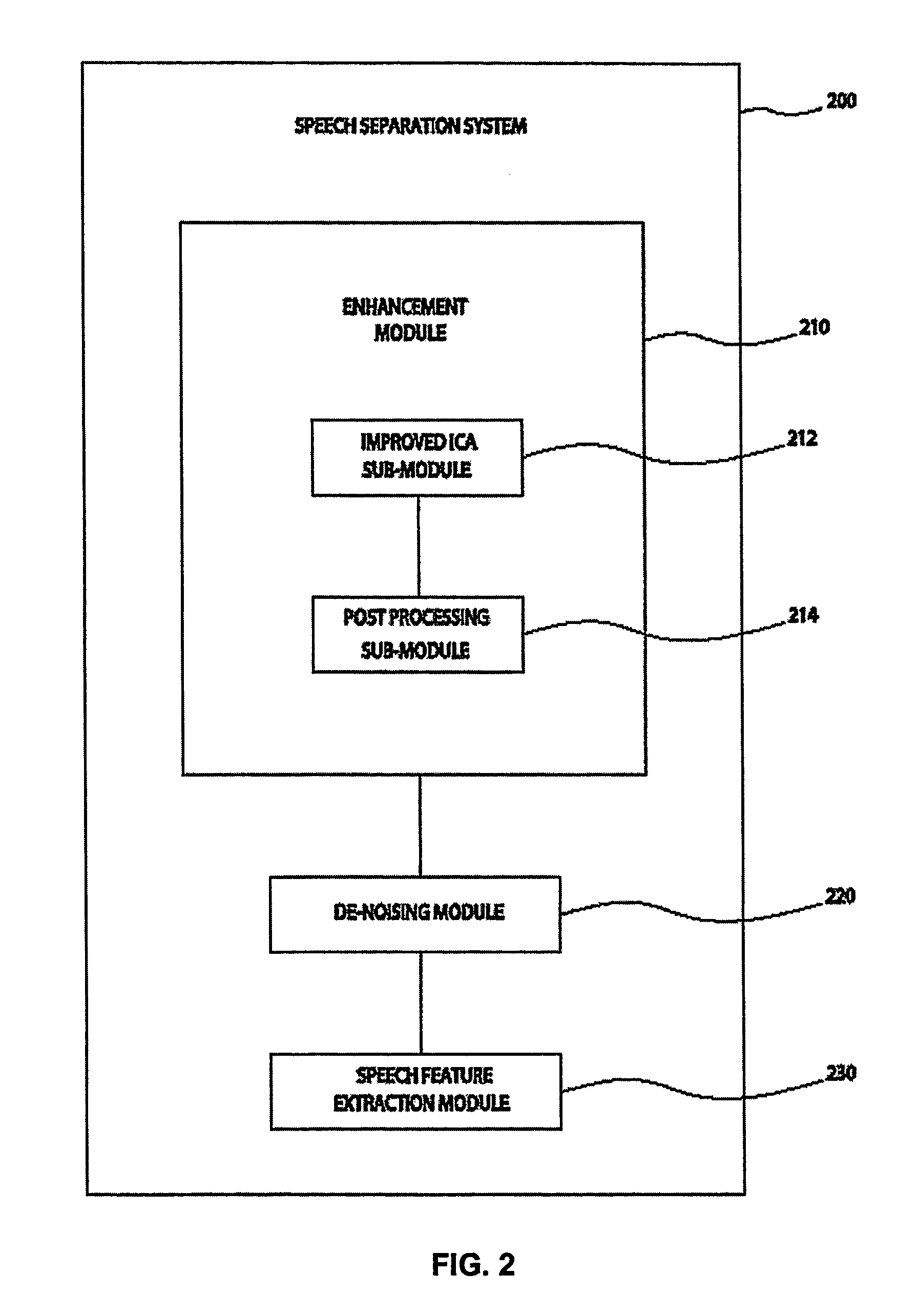System and method for speech processing using independent component analysis under stability constraints
a technology of independent component analysis and system and method, applied in the field of systems and methods for audio signal processing, to achieve the effect of slowing down the filter learning process, avoiding reverb effects, and restricting the adaptation speed of filter weigh
- Summary
- Abstract
- Description
- Claims
- Application Information
AI Technical Summary
Benefits of technology
Problems solved by technology
Method used
Image
Examples
Embodiment Construction
[0033]Preferred embodiments of a speech separation system are described below in connection with the drawings. In order to enable real-time processing with limited computing power, the system uses an improved ICA processing sub-module of cross filters with simple and easy-to-compute bounded functions. Compared to conventional approaches, this simplified ICA method reduces the computing power requirement and successfully separates speech signals from non-speech signals.
[0034]Speech Separation System Overview
[0035]FIG. 2 illustrates one embodiment of a speech separation system 200. The system 200 includes a speech enhancement module 210, an optional speech de-noising module 220, and an optional speech feature extraction module 230. The speech enhancement module 210 includes an improved ICA processing sub-module 212 and optionally a post-processing sub-module 214. The improved ICA processing sub-module 212 uses simplified and improved ICA processing to achieve real-time speech separati...
PUM
 Login to View More
Login to View More Abstract
Description
Claims
Application Information
 Login to View More
Login to View More - R&D
- Intellectual Property
- Life Sciences
- Materials
- Tech Scout
- Unparalleled Data Quality
- Higher Quality Content
- 60% Fewer Hallucinations
Browse by: Latest US Patents, China's latest patents, Technical Efficacy Thesaurus, Application Domain, Technology Topic, Popular Technical Reports.
© 2025 PatSnap. All rights reserved.Legal|Privacy policy|Modern Slavery Act Transparency Statement|Sitemap|About US| Contact US: help@patsnap.com



